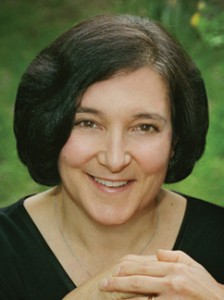Autism College will present a free live Q & A on Monday, September 19, from 6:00 to 7:00pm PST with Tom Fields-Meyer, moderated by Chantal Sicile-Kira. Tom is the author of the recently published book: FOLLOWING EZRA: What One Father Learned About Gumby, Otters, Autism, and Love from His Extraordinary Son, moderated by Chantal Sicile-Kira. Sign up for this webinar at the bottom of this post. The publisher has generously agreed to send a free copy of the book to one of the Q & A participants, so send in a question and you may get more than just an answer!
About the book, from the Following Ezra website:
When Tom Fields-Meyer’s son Ezra was a toddler and showing early signs of autism, a therapist suggested that the father allow himself time to mourn.
“For what?” he asked.
The answer: “For the child he didn’t turn out to be.”
That moment helped strengthen Tom’s resolve to do just the opposite: to celebrate the child Ezra was becoming, a singular boy with a fascinating and complex mind. Full of unexpected laughs, poignant moments and remarkable insights, Following Ezra is the riveting story of a father and son on a ten-year adventure, from Ezra’s diagnosis to the dawn of his adolescence. An engaging account of a father gradually uncovering layers of a puzzle, it rejoices in each new discovery and exults in the boy’s evolution from a remote toddler to an extraordinary young man, connected to the world in his own astounding ways.
Unlike other parenting memoirs, Following Ezra isn’t about a battle against a disease, nor is it a clinical account of searching for doctors, therapies or miracle diets. Instead, Fields-Meyer describes—with humor and tenderness—the wondrous, textured, and often surprising life one experiences in raising a unique child.
“This story will illuminate the experience of parenting a child with autism for those who don’t know it, and will resonate with those of us who know it all too well,” says novelist Cammie McGovern. “There are blessings along the way, and Tom Fields-Meyer depicts them beautifully.”
About the author, from the Following Ezra website:
Tom Fields-Meyer has been writing stories for popular audiences for nearly three decades, specializing in telling meaningful and worthwhile narratives with humanity, humor and grace. In twelve years as senior writer at People, he produced scores human-interest pieces and profiles of newsmakers. He penned articles on some of the biggest crime stories of the day (from the O.J. Simpson trial to the murder of Matthew Shepherd), profiled prominent politicians and world leaders (Nancy Pelosi, Pope John Paul II, Sen. Ted Kennedy), and demonstrated a pitch-perfect touch writing tales of ordinary people overcoming life’s challenges in inspiring and compelling ways.
Tom also lends his skills to help others to put their compelling personal narratives into words. He teamed up with the late Eva Brown, a popular speaker at The Simon Wiesenthal Center’s Museum of Tolerance, to write Brown’s memoir, If You Save One Life: A Survivor’s Memoir (2007). Wiesenthal executive director Rabbi Marvin Hier called the book “very significant and meaningful…an everlasting and important legacy…and a reminder to future generations that championing tolerance, justice and social change are everyone’s obligation.”
Tom collaborated with Noah Alper, founder Noah’s Bagels, the successful West Coast chain, on Alper’s memoir: Business Mensch: Timeless Wisdom for Today’s Entrepreneur (2009). Publisher’s Weekly said: “This earnest book shines with Alper’s conviction, business savvy and decency.”
In September 2011, NAL/Penguin Books will publish Tom’s memoir, Following Ezra: What One Father Learned About Gumby, Otters, Autism, and Love from His Extraordinary Son. Full of tender moments and unexpected humor, the book tells the story of a father and son on a ten-year journey from Ezra’s diagnosis to the dawn of his adolescence. It celebrates Ezra’s evolution from a remote toddler to an extraordinary young man, connected in his own remarkable ways to the world around him.
Tom previously worked as a news reporter and feature writer for the Dallas Morning News, where he covered the kinds of stories that happen only in Texas (shootouts in Country-Western dance halls, culture pieces on the State Fair) and once was dispatched to Nevada to investigate a road designated by AAA as “America’s loneliest highway.” As a senior editor at the Chronicle of Higher Education, he traveled the nation’s campuses and once convinced his editor to send him on a 10-day junket aboard a schooner in the Bahamas (an assignment he came to regret, not just because of seasickness). Tom’s writing has appeared in dozens of publications, including The New York Times Magazine, The Wall Street Journal, the Los Angeles Times and Esquire.
A graduate of Harvard University, Tom lives in Los Angeles with his wife, Rabbi Shawn Fields-Meyer, and their three sons.
To sign up for the webinar, please signup for our newsletter here. Already signed up for the newsletter? Click here




